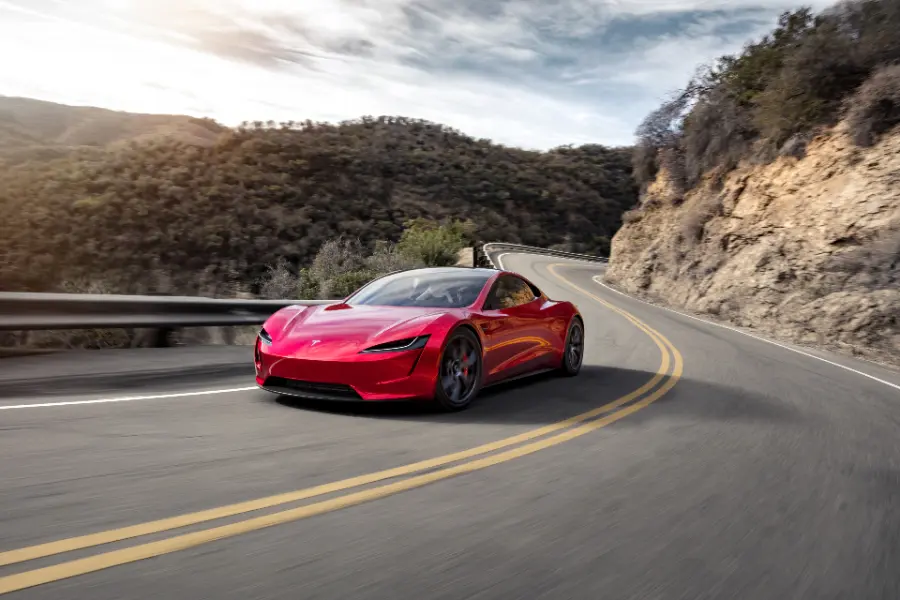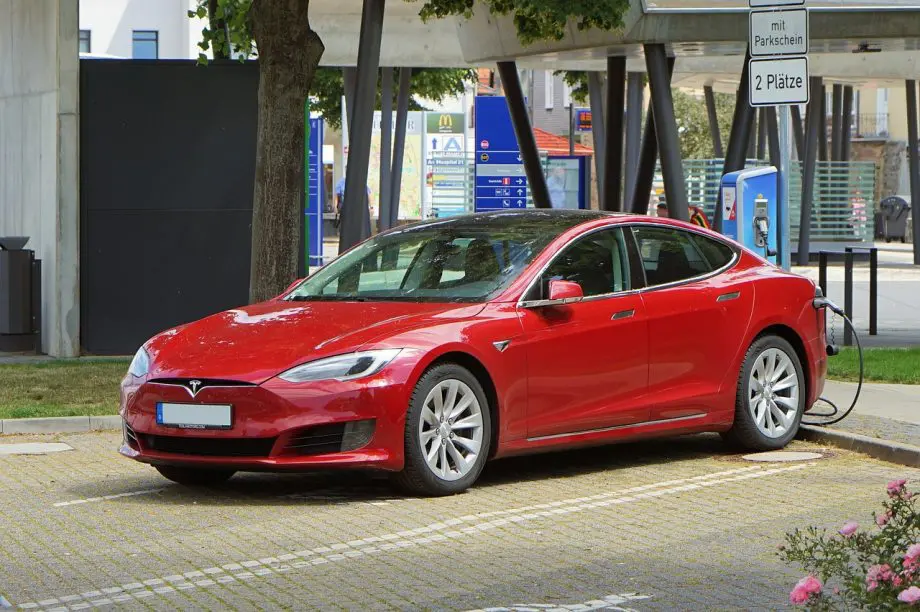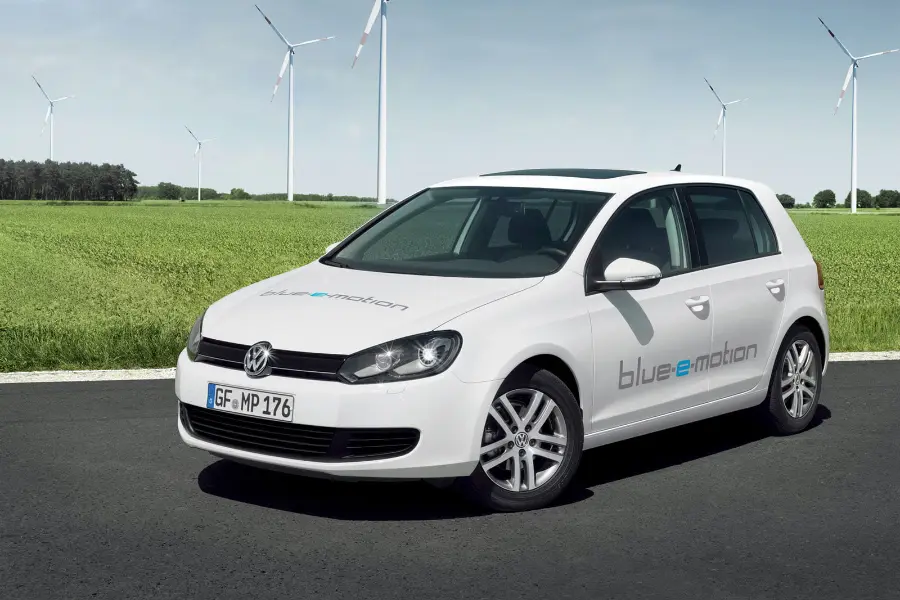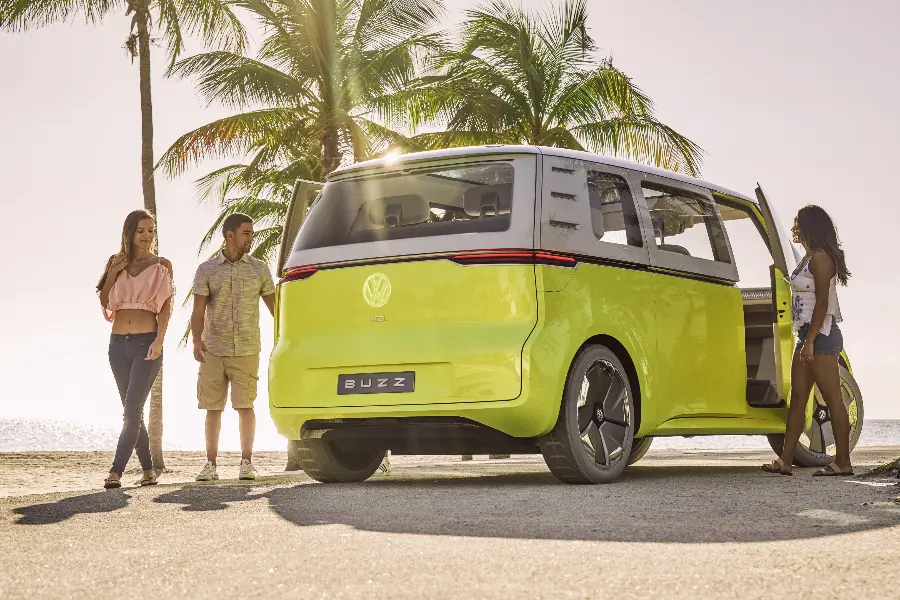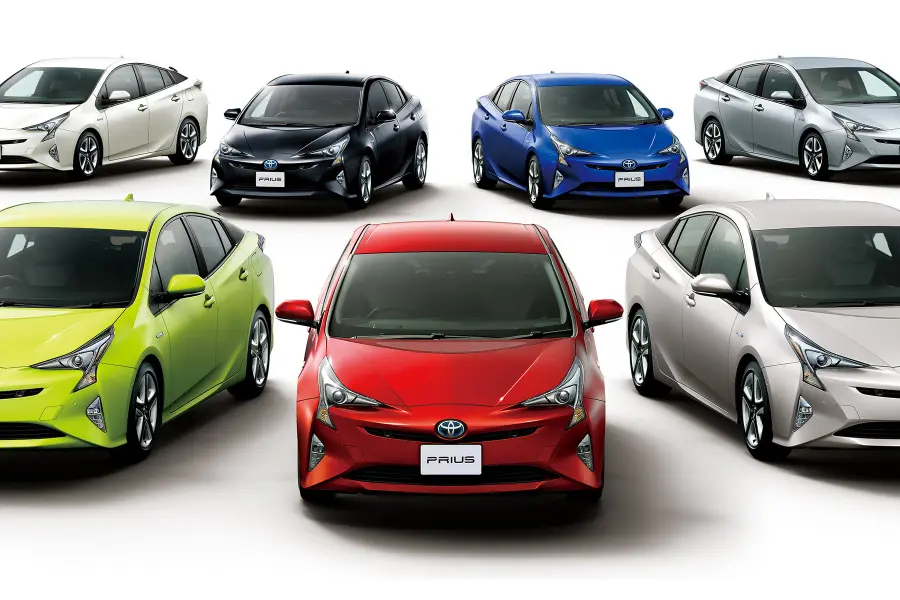
Discover the role of electric vehicles in reducing carbon emissions. Join us as we explore the science, environmental impact, and future of EVs!
Ever wondered about the role of electric vehicles in reducing carbon emissions? Well, you’re in the right place!
As we journey into the world of electric vehicles, we’ll uncover how these technological marvels are not just changing the way we drive, but also making a significant impact in our fight against climate change.
So, buckle up, and let’s dive into the fascinating world of electric vehicles and their role in our sustainable future!
The Role of Electric Vehicles in Reducing Carbon Emissions
Welcome to our deep dive into the exciting world of electric vehicles! In this post, we’re going to explore the pivotal role of electric vehicles in reducing carbon emissions.
From understanding the science behind these innovative machines to examining their environmental impact and their role in the energy sector, we’ve got it all covered.
We’ll also tackle the challenges we face in adopting electric vehicles and take a peek into what the future holds for them.
So, if you’ve ever been curious about electric vehicles and their contribution to a greener planet, stick around. This is going to be an enlightening ride!
Definition of Electric Vehicles (EVs)
Let’s start with the basics, shall we? Electric Vehicles, or EVs as they are commonly known, are a type of vehicle that uses one or more electric motors for propulsion.
Unlike traditional vehicles that run on gasoline or diesel, EVs are powered by electricity, which can be sourced from the grid and stored in the vehicle’s battery.
This shift from fossil fuels to electricity is a game-changer, not just for the auto industry, but for our environment as well.
Brief Overview of the Role of EVs in Reducing Carbon Emissions
Now, you might be wondering, What’s the big deal about EVs and why are they so important in the fight against climate change?
Well, the answer lies in their ability to reduce carbon emissions.
Traditional vehicles emit a significant amount of carbon dioxide, a greenhouse gas that contributes to global warming, every time they’re driven.
On the other hand, EVs produce zero tailpipe emissions. That’s right, zero!
This means that every time we choose to drive an EV instead of a gasoline-powered car, we’re actively reducing the amount of carbon emissions we’re releasing into the atmosphere.
And that’s a big deal in our collective effort to combat climate change.
The Science Behind Electric Vehicles
Ready to put on your science cap? Great! Because we’re about to delve into the fascinating world of electric vehicles from a scientific perspective.
Don’t worry, we won’t get too technical. We’ll explore how these incredible machines work and how they stack up against traditional vehicles in terms of energy efficiency.
So, whether you’re a science enthusiast or just curious about the mechanics of your electric ride, this section is sure to spark your interest. Let’s get started!
How EVs Work
Let’s start with the heart of an electric vehicle, the electric motor. Unlike traditional cars that use internal combustion engines, EVs use electric motors powered by electricity.
This electricity is stored in a large battery pack, usually located at the bottom of the vehicle.
When you step on the accelerator, the electricity from the battery is sent to the motor, which then turns the wheels. Simple, right?
But here’s the cool part, when you brake, the energy from the slowing vehicle is converted back into electricity, which is then sent back to the battery.
This process, known as regenerative braking, helps to extend the vehicle’s range.
Comparison of EVs and Traditional Vehicles in Terms of Energy Efficiency
Now, let’s compare EVs with traditional vehicles in terms of energy efficiency.
Traditional vehicles, which run on gasoline or diesel, are only about 17-21% energy efficient.
This means that only a small portion of the energy from the fuel you put in your car is used to move the car down the road.
The rest is lost as heat, noise, and emissions.
On the other hand, electric vehicles are about 59-62% energy efficient.
That’s almost three times more efficient! This high efficiency means that EVs use less energy to travel the same distance as a traditional car, making them a more eco-friendly choice.
Plus, with no tailpipe emissions, EVs help us keep our air cleaner. So, in the battle for energy efficiency, EVs clearly take the win!
The Environmental Impact of Electric Vehicles
Alright, now that we’ve got the science part down, let’s shift gears and talk about something that’s on everyone’s mind these days, the environment.
We all know that our planet is facing some serious challenges, and it’s up to us to do our part to help.
This is where electric vehicles come into play. In this section, we’ll explore the environmental impact of EVs, from their ability to reduce tailpipe emissions to their effect on air quality.
So, if you’re passionate about making greener choices for our planet, you’re going to find this part particularly interesting. Let’s dive in!
Reduction of Tailpipe Emissions
One of the biggest environmental benefits of electric vehicles is their ability to reduce tailpipe emissions.
You see, traditional vehicles that run on gasoline or diesel emit a significant amount of pollutants from their tailpipes, including carbon dioxide, a major contributor to global warming.
Electric vehicles, on the other hand, produce zero tailpipe emissions. Yes, you heard that right zero!
This means that every mile driven in an electric vehicle is a mile driven without adding any harmful pollutants to our air.
Lifecycle Greenhouse Gas Emissions of EVs
Now, let’s talk about lifecycle greenhouse gas emissions. This refers to the total emissions produced by a vehicle from the time it’s manufactured to the time it’s retired.
While it’s true that the production of electric vehicles, especially their batteries, can generate more emissions than the production of traditional cars, the overall lifecycle emissions of EVs are still much lower.
This is because EVs make up for their higher production emissions with lower operating emissions over their lifetime.
In fact, studies have shown that EVs can emit up to 70% less carbon dioxide over their lifetime compared to gasoline-powered cars.
The Impact of EVs on Air Quality
Finally, let’s discuss the impact of electric vehicles on air quality.
Poor air quality is a serious issue in many cities around the world, and a large part of the problem comes from emissions from traditional vehicles.
By eliminating tailpipe emissions, electric vehicles can significantly improve air quality, especially in urban areas.
This not only helps our planet, but it also has direct health benefits for us, as cleaner air can lead to fewer respiratory issues and other health problems.
So, by choosing to drive an electric vehicle, you’re not just helping the environment, you’re also contributing to healthier communities!
The Role of EVs in the Energy Sector
Having explored the environmental impact of electric vehicles, let’s now turn our attention to their role in the energy sector.
You might be wondering, ‘What do cars have to do with the energy sector?’ Well, as it turns out, quite a lot!
Electric vehicles are not just transforming the way we drive, but they’re also reshaping the way we consume and produce energy.
In this section, we’ll delve into the relationship between EVs and renewable energy, and how EVs contribute to energy efficiency.
So, if you’re curious about the bigger picture of how electric vehicles fit into our energy landscape, keep reading.
This is where things get really interesting!
The Relationship Between EVs and Renewable Energy
Electric vehicles and renewable energy are like two peas in a pod – they go hand in hand in our transition toward a more sustainable future.
Here’s why: EVs are powered by electricity, which can be generated from various sources, including renewable ones like wind and solar.
As more and more of our electricity comes from these renewable sources, the carbon footprint of EVs gets even smaller.
Plus, with the development of smart grids and vehicle-to-grid technology, EVs can even feed electricity back into the grid during peak demand times.
This symbiotic relationship between EVs and renewable energy not only helps reduce our reliance on fossil fuels but also paves the way for a more resilient and sustainable energy system.
How EVs Contribute to Energy Efficiency
Now, let’s talk about energy efficiency. We’ve already mentioned that EVs are more energy-efficient than traditional vehicles.
But their contribution to energy efficiency goes beyond just using less energy to travel the same distance.
EVs can also play a significant role in balancing the load on the electricity grid.
With smart charging systems, EVs can be charged during off-peak hours when demand for electricity is low, and in some cases, they can even send electricity back to the grid when demand is high.
This not only makes the most efficient use of our electricity supply but also helps to stabilize the grid, making our energy system more efficient as a whole.
So, by driving an EV, you’re not just saving on fuel costs, you’re also contributing to a more efficient and sustainable energy system!
Challenges and Solutions in Adopting Electric Vehicles
As much as we’ve been singing the praises of electric vehicles, it’s important to acknowledge that the road to widespread EV adoption isn’t without its bumps.
From infrastructure needs to range anxiety, there are several challenges that need to be addressed.
But don’t worry, it’s not all doom and gloom! With every challenge comes an opportunity for innovative solutions.
In this section, we’ll explore some of the current challenges in EV adoption and the potential strategies to overcome them.
So, if you’re interested in the nitty-gritty of what it takes to make the switch to electric, this section is for you. Let’s dive in!
Current Challenges in EV Adoption
While the benefits of electric vehicles are clear, there are still a few hurdles we need to overcome for their widespread adoption.
One of the main challenges is the lack of charging infrastructure, especially in rural and remote areas.
This can lead to ‘range anxiety’, where potential EV owners worry about running out of charge before reaching their destination or a charging station.
Another challenge is the higher upfront cost of EVs compared to traditional vehicles, although this is offset over time by lower operating costs.
Lastly, there’s the issue of the time it takes to charge an EV, which is longer than it takes to fill up a gas tank.
Potential Solutions and Strategies to Overcome These Challenges
Despite these challenges, there are several strategies and solutions being developed to make the transition to electric vehicles easier.
To address the issue of charging infrastructure, governments, and private companies are investing in expanding the network of charging stations.
Some are even exploring innovative solutions like wireless charging roads and battery swap stations.
To make EVs more affordable, various incentives and subsidies are being offered to reduce the upfront cost of EVs.
And as for the charging time, advances in technology are continually reducing the time it takes to charge an EV, with some fast-charging stations now able to charge an EV to 80% in just 30 minutes.
So, while the road to widespread EV adoption may have a few bumps, we’re well on our way to overcoming them!
The Future of Electric Vehicles
Having explored the current landscape of electric vehicles, it’s time to look ahead.
What does the future hold for EVs? How will they continue to evolve and what impact will they have on our carbon emissions?
In this section, we’ll delve into the predicted trends in EV development and adoption, and the potential impact of these trends on our environment.
So, if you’re excited about the future of transportation and curious about what’s next for electric vehicles, you’re in for a treat. Let’s take a glimpse into the future!
Predicted Trends in EV Development and Adoption
As we look toward the future, several exciting trends are emerging in the world of electric vehicles.
First, we’re likely to see a continued increase in EV adoption. As the cost of batteries continues to fall and charging infrastructure improves, more and more people are expected to make the switch to electric.
Second, we can expect to see advancements in EV technology, including longer battery life, shorter charging times, and even self-driving capabilities.
Finally, we’re likely to see more variety in the types of electric vehicles available, from compact city cars to electric trucks and buses, making it easier for everyone to find an EV that suits their needs.
The Potential Impact of These Trends on Carbon Emissions
So, what does all this mean for carbon emissions? Well, the impact could be huge.
As more people switch to electric vehicles, we’ll see a significant reduction in the amount of carbon dioxide emitted by the transportation sector.
Plus, as the electricity grid becomes greener with more renewable energy, the emissions from charging EVs will also decrease.
In fact, some studies suggest that by 2050, widespread EV adoption could reduce global carbon emissions by up to 1.5 gigatons per year.
That’s equivalent to the current total emissions of Russia! So, the future of EVs not only looks bright but also green!
FAQs
Now, we’ve covered a lot of ground so far, and you might still have a few questions brewing.
That’s why we’ve dedicated this section to answering some of the most frequently asked questions about electric vehicles.
From their environmental benefits to the challenges in adopting them, we’ve got you covered.
So, if you’ve been wondering, ‘Are electric vehicles really better for the environment?’ or ‘How do they actually reduce carbon emissions?’, you’re about to find out. Let’s get those questions answered!
Q: Are electric vehicles better for the environment?
A: Absolutely! Electric vehicles are better for the environment in several ways.
Firstly, they produce zero tailpipe emissions, which means they don’t emit harmful pollutants into the air we breathe.
Secondly, they are more energy-efficient than traditional vehicles, which means they use less energy to travel the same distance.
Lastly, their overall lifecycle emissions, which include emissions from production, operation, and disposal, are lower than those of conventional vehicles.
So, by choosing to drive an electric vehicle, you’re making a choice that’s better for the environment.
Q: How do electric vehicles reduce carbon emissions?
A: Electric vehicles reduce carbon emissions primarily by eliminating tailpipe emissions.
Traditional vehicles that run on gasoline or diesel emit carbon dioxide every time they’re driven.
Electric vehicles, on the other hand, produce zero tailpipe emissions. This means that every mile driven in an electric vehicle is a mile driven without releasing any carbon dioxide into the atmosphere.
Additionally, as more of our electricity comes from renewable sources, the emissions from charging electric vehicles will also decrease, further reducing their carbon footprint.
Q: What are the challenges in adopting electric vehicles?
A: While the benefits of electric vehicles are clear, there are a few challenges that need to be overcome for their widespread adoption.
These include:
• The higher upfront cost of EVs compared to traditional vehicles.
• The lack of charging infrastructure, especially in rural and remote areas.
• The time it takes to charge an EV.
However, these challenges are being addressed through various strategies, such as offering incentives to reduce the cost of EVs, investing in charging infrastructure, and developing faster charging technologies.
So, while there are challenges, the future of EV adoption looks promising!
Conclusion
As we approach the end of our journey exploring the role of electric vehicles in reducing carbon emissions, it’s time to take a moment to reflect on what we’ve learned.
From understanding the science behind EVs to exploring their environmental impact and future trends, we’ve covered a lot of ground.
In this final section, we’ll recap the key points and share some final thoughts on the future of electric vehicles.
So, whether you’re an EV enthusiast or just starting to learn about them, let’s wrap up this enlightening journey together!
Recap of the Role of EVs in Reducing Carbon Emissions
Let’s take a moment to revisit the key role that electric vehicles play in reducing carbon emissions.
EVs, with their zero tailpipe emissions, are a powerful tool in our fight against climate change.
By eliminating the carbon dioxide emissions that come from traditional vehicles, EVs help us reduce our carbon footprint every time we drive.
Plus, with their high energy efficiency and the potential to run on renewable electricity, EVs offer a more sustainable alternative for our transportation needs.
So, the role of EVs in reducing carbon emissions? It’s a big one, and it’s a role that’s set to become even more significant as EV technology continues to advance.
Final Thoughts on the Future of EVs
As we look towards the future, it’s clear that electric vehicles are more than just a passing trend, they’re a key part of our journey towards a more sustainable future.
With ongoing advancements in EV technology, improvements in charging infrastructure, and an increasing shift toward renewable energy, the future of EVs looks bright.
Yes, there are challenges to overcome, but with every challenge comes an opportunity for innovation.
So, as we continue to navigate our way toward a greener future, one thing is certain – electric vehicles will be leading the charge!

